Advertisements
Advertisements
प्रश्न
Figure shows electric field lines in which an electric dipole P is placed as shown. Which of the following statements is correct?
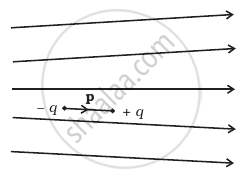
विकल्प
The dipole will not experience any force.
The dipole will experience a force towards right.
The dipole will experience a force towards left.
The dipole will experience a force upwards.
उत्तर
The dipole will experience a force towards left.
Explanation:
If the lines of force are equidistant and parallel straight lines, the field is uniform and if either lines of force are not equidistant, or straight line or both, the field will be non-uniform. The number of electric field lines passing per unit area is proportional to the strength of the electric field. For example, see the following figures:
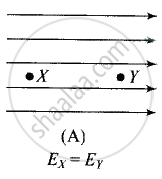
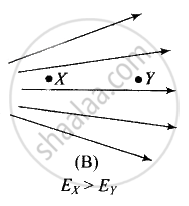
Hence in a given question, from the given pattern of electric field lines, it is clear that the strength of the electric field decreases from left to right. As a result force on charges also decreases from left to right.
Here in the given figure, the force on charge -q is greater than the force on charge +q in turn dipole will experience a force towards left.
APPEARS IN
संबंधित प्रश्न
Why do the electrostatic field lines not form closed loops?
- An electrostatic field line is a continuous curve. That is, a field line cannot have sudden breaks. Why not?
- Explain why two field lines never cross each other at any point?
(a) Derive an expression for the electric field E due to a dipole of length '2a' at a point distant r from the centre of the dipole on the axial line.
(b) Draw a graph of E versus r for r >> a.
(c) If this dipole were kept in a uniform external electric field E0, diagrammatically represent the position of the dipole in stable and unstable equilibrium and write the expressions for the torque acting on the dipole in both the cases.
The intensity of the electric field at a perpendicular distance of 0·5 m from an infinitely long line charge having linear charge density (λ) is 3-6 × 103 Vm-1. Find the value of λ.
Explain why two field lines never cross each other at any point?
If Ea be the electric field strength of a short dipole at a point on its axial line and Ee that on the equatorial line at the same distance, then:
An electron enters an electric field with its velocity in the direction of the electric lines of force. Then ______
In figure, two positive charges q2 and q3 fixed along the y axis, exert a net electric force in the + x direction on a charge q1 fixed along the x-axis. If a positive charge Q is added at (x, 0), the force on q1
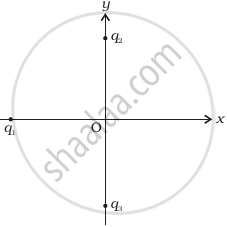 (a) |
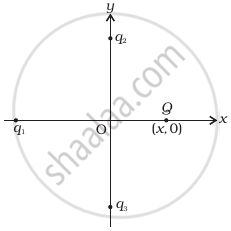 (b) |
Figure shows the electric field lines around three point charges A, B and C.
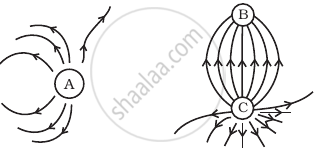
- Which charges are positive?
- Which charge has the largest magnitude? Why?
- In which region or regions of the picture could the electric field be zero? Justify your answer.
(i) near A, (ii) near B, (iii) near C, (iv) nowhere.
